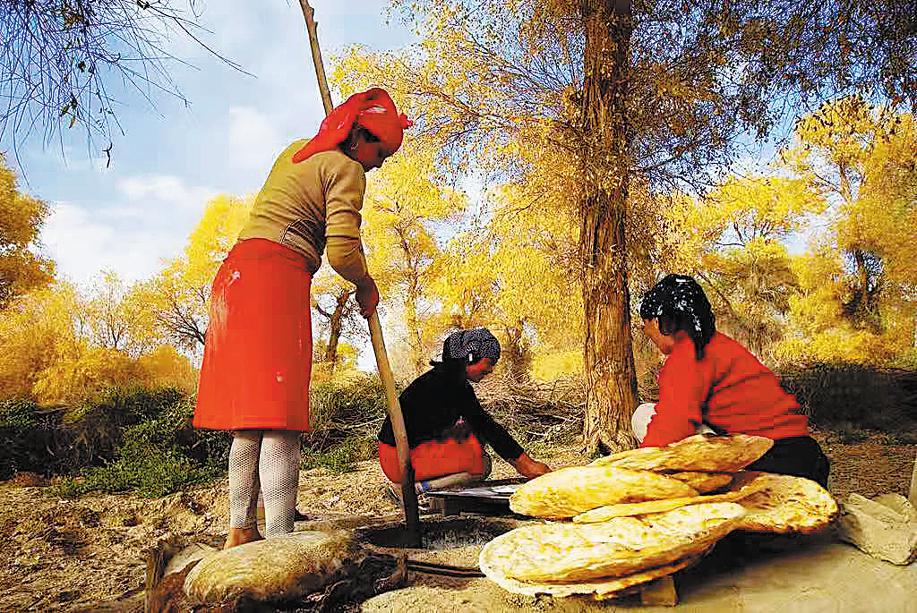A village where beauty is natural

Wang Jianbo's photo of Uygur women making nang. [Photo provided to China Daily]
At that time, the road leading to the village was narrow and dilapidated. Visitors also had to take a ferry to cross the Tarim River to get to the village, recalls Wang.
"It was impossible for people to drive straight to the village back then," he says.
Wang took many photos, recording the lifestyle of the villagers and the picturesque landscape of the remote place.
The following year, one of the photos, in which three Uygur women in red dresses cook nang bread in the traditional manner under some poplar trees with golden-colored leaves, was awarded a prize in a national photography contest.
"The secluded village started to draw the attention of artists, who were lured by its primitive beauty," says Wang.
In 2018, a bridge spanning the Tarim River was erected to link the village to the outside world and the road was broadened and paved.
Artists then started to visit and take up short-term residence in the village, creating art that included photos, calligraphy, paintings and songs.
"Their artistic creations also helped to promote the village," Wang says. "Then tourism began to grow."
At that point, villagers were encouraged to run their own businesses, such as opening restaurants or homestays.
Ismayil Amat has transformed his house into the latter. He also owns more than 200 mu (13.33 hectares) of farmland.
"In recent years, after the poplar leaves turn yellow in autumn, many tourists come to our village for sightseeing and to experience local customs," he says, adding that he can earn 100,000 yuan ($15,433) in a single year.
Another photographer, Wu Bing, also a painter and a maker of Chinese zithers (guqin), from East China's Jiangsu province, is also attracted by the poplar forest in Aopukan village and regularly visits the area.
When he stays in the village, he plays the guqin, performing alongside local people who play the dutar (a long-necked lute with two strings) and other traditional Uygur instruments.
He is planning to set up a studio in the village and bring more friends to visit in the future.








